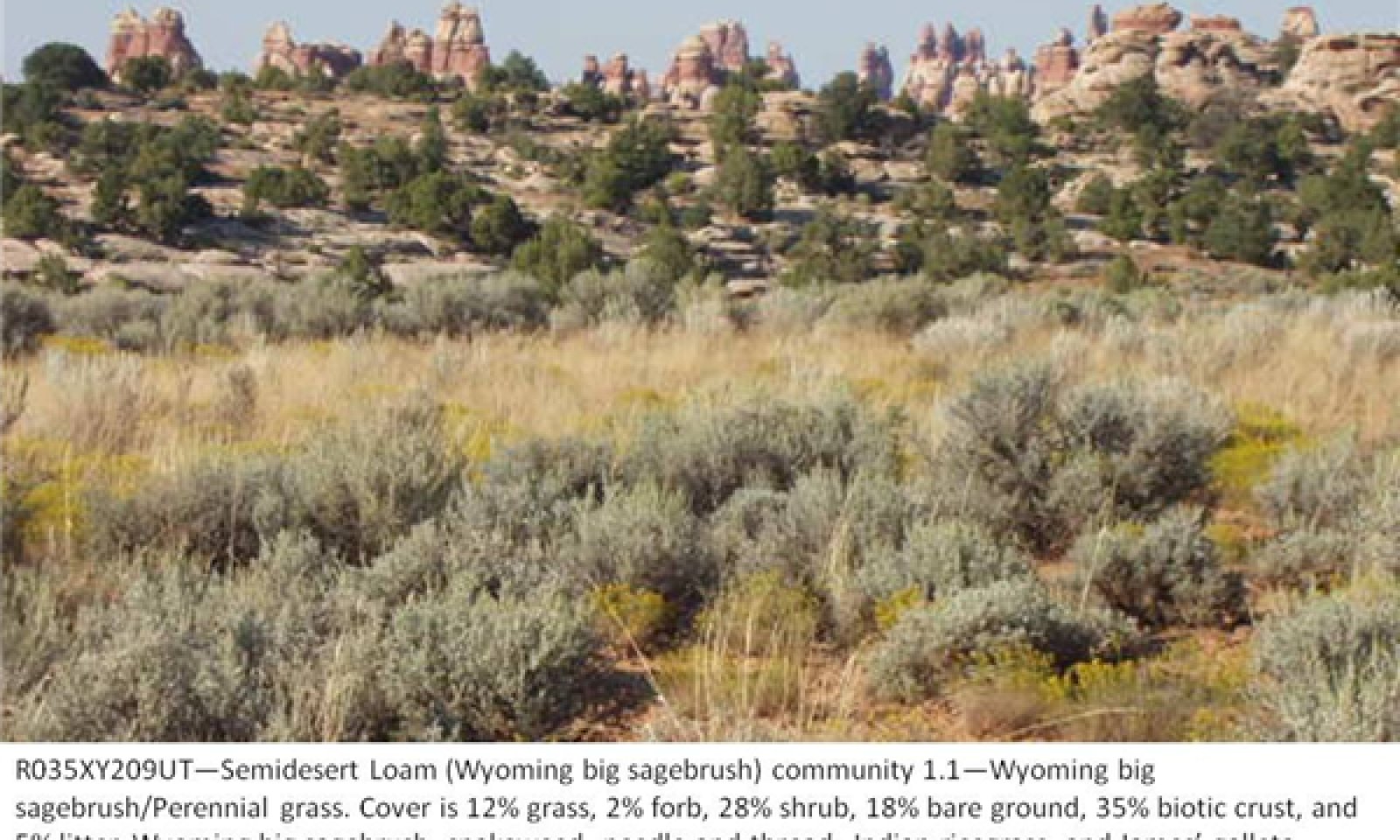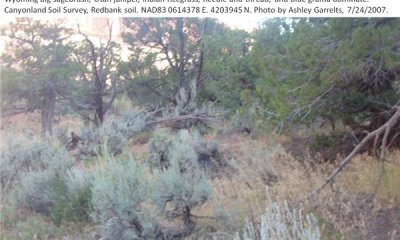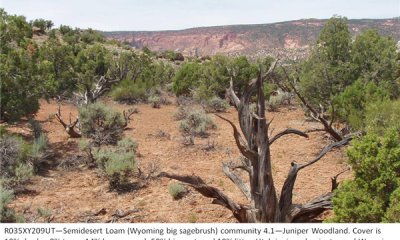
Semidesert Loam (Wyoming Big Sagebrush)
Scenario model
Current ecosystem state
Select a state
Management practices/drivers
Select a transition or restoration pathway
- Transition T1a More details
- Transition T2a More details
- Transition T2b More details
-
No transition or restoration pathway between the selected states has been described
Target ecosystem state
Select a state
Description
The reference state represents the plant communities and ecological dynamics of the semidesert loam (Wyoming big sagebrush) site. This state includes the biotic communities that become established on the ecological site if all successional sequences are completed under the natural disturbance regime. The reference state is generally dominated by Wyoming big sagebrush and perennial grasses. The reference state is self sustaining and resistant to change due to high resistance to natural disturbances and high resilience following natural disturbances. When natural disturbances occur, the rate of recovery is variable due to disturbance intensity. Once invasive plants establish, return to the reference state may not be possible.
Reference State: Wyoming big sagebrush state with fluctuations form a Wyoming big sagebrush shrubland to a grassland and a shrubland/grassland community.
Indicators: A community dominated by Wyoming big sagebrush or perennial grasses.
Feedbacks: Continuous season long grazing of perennial grasses, frequent fire, or other disturbance that may allow for the establishment of invasive species.
At-risk Community Phase: This state is at risk when plants are stressed and nutrients become available for invasive plants to establish.
Trigger: The establishment of invasive plant species.
Submodel
Description
The current potential state is similar to the reference state, however invasive species are present in all community phases. This state is generally dominated by Wyoming big sagebrush, however depending on disturbance history, native grasses may dominate the site. Primary disturbance mechanisms include climate fluctuations, fire, native herbivore grazing, domestic livestock grazing and surface disturbances such as road and pipeline development and off road vehicle (OHV) use. Timing of these disturbances dictates the ecological dynamics that occur. The current potential state is stable, but is losing resistance to change due to lower resistance to disturbances and lower resilience following disturbances. When disturbances occur, the rate of recovery is variable depending on severity.
Current Potential State: Wyoming big sagebrush state with fluctuations from a Wyoming big sagebrush shrubland to a grassland, shrubland/grassland, or a juniper encroached shrubland community. Invasive plants are present.
Indicators: A community dominated by Wyoming big sagebrush where native perennial grasses and forbs may or may not be present. Invasive grasses and forbs are present.
Submodel
Description
This state is the result of a successful rangeland seeding during years of average or above average precipitation during the growing season. Russian wildrye and crested wheatgrass are documented to establish on this site, and native species begin to re-establish naturally on the site 10-30 years after seeding. Failed seedings on this site have not been documented as of this report.
Submodel
Description
This state occurs when perennial grasses become too sparse to produce and bank sufficient seed to become dominant after fire or tree removal. Shrubs also decrease and may be unable to return following tree removal. It is unknown whether this state accelerates erosion, but soil fertility is expected to decline as this state persists, due to a lack of fine root turnover and other organic matter inputs associated with sagebrush grasslands.
Submodel
Mechanism
This transition is from the native perennial warm and cool season grass understory in the reference state to a state that contains invasive species. Events can include establishment of invasive plant species, intense continuous grazing of perennial grasses, prolonged drought, and/or surface disturbances, etc. However, invasive species such as cheatgrass have been known to invade intact perennial plant communities with little to no disturbance. Once invasive species are found in the plant community a threshold has been crossed.
Mechanism
This transition occurs when a successful range seeding (during average or above-average precipitation years during the growing season) results in the establishment, dominance, and persistence of non-native grasses.
Model keys
Briefcase
Add ecological sites and Major Land Resource Areas to your briefcase by clicking on the briefcase (![]() ) icon wherever it occurs. Drag and drop items to reorder. Cookies are used to store briefcase items between browsing sessions. Because of this, the number of items that can be added to your briefcase is limited, and briefcase items added on one device and browser cannot be accessed from another device or browser. Users who do not wish to place cookies on their devices should not use the briefcase tool. Briefcase cookies serve no other purpose than described here and are deleted whenever browsing history is cleared.
) icon wherever it occurs. Drag and drop items to reorder. Cookies are used to store briefcase items between browsing sessions. Because of this, the number of items that can be added to your briefcase is limited, and briefcase items added on one device and browser cannot be accessed from another device or browser. Users who do not wish to place cookies on their devices should not use the briefcase tool. Briefcase cookies serve no other purpose than described here and are deleted whenever browsing history is cleared.
Ecological sites
Major Land Resource Areas
The Ecosystem Dynamics Interpretive Tool is an information system framework developed by the USDA-ARS Jornada Experimental Range, USDA Natural Resources Conservation Service, and New Mexico State University.










